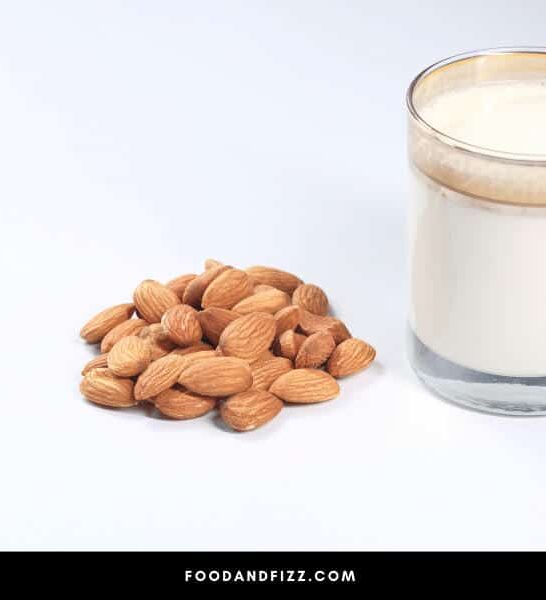How to Pasteurize Almond Milk? Pasteurized almond milk is a popular choice among many health enthusiasts, thanks to the various health benefits it offers. It has a diverse nutritional profile rich in vitamins E and D.
Besides being naturally lactose-free, almond milk is an excellent source of calcium, potassium, and phosphorous minerals.
Pasteurizing this milk helps eliminate various contaminants, including salmonella. Yet, not many people understand how best to pasteurize this milk. The following insights will help.
How to Pasteurize Almond Milk
To pasteurize almond milk use blanching, oil roasting, steam processing, propylene oxide, and moist heat. Yet, all processes must be validated, which is a process that checks the ability to destroy the microorganisms in almonds.

Methods Used to Pasteurize Almond Milk
1. Blanching and Oil Roasting
Blanching is a popular pasteurization method that requires you to boil your almonds to remove the skin. Depending on the materials or equipment available, you could use steam or oil.
This thermal approach aims at inactivating relatively heat-sensitive microorganisms in the almond milk. You can rely on it to eliminate molds, yeasts, and vegetative bacteria. Notably, this approach is suitable for conventional and organic almonds.
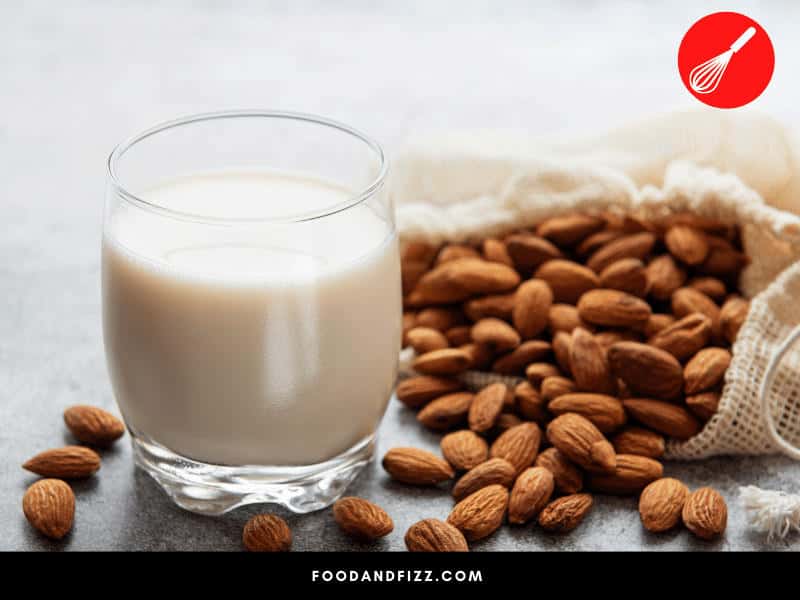
2. Steam Processing
Steam pasteurization is a pretty popular choice among many people. It is a steaming method that involves a specific temperature and heating period. In this case, the almonds are exposed to high temperatures within a short time.
Further, you can apply this steam under vacuum or ambient pressure, depending on your objectives. Notably, this method works well for both conventional and organic almonds.
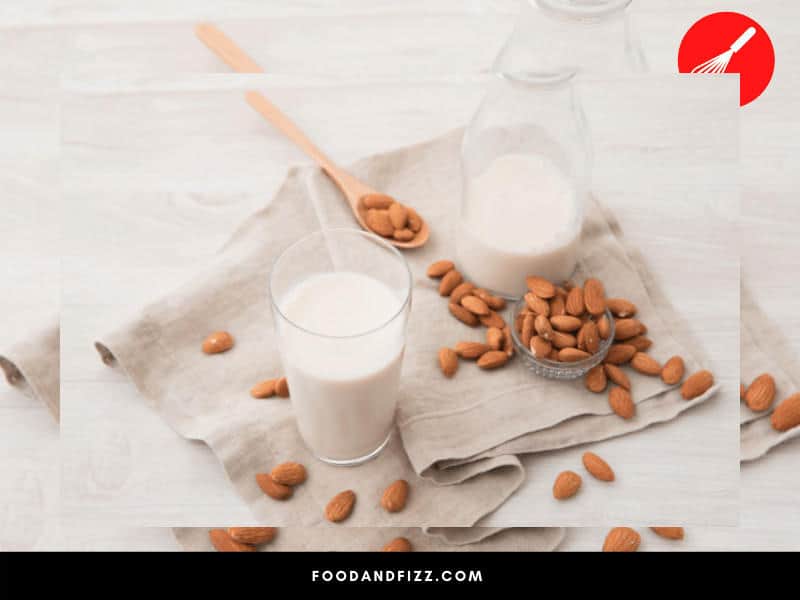
3. Propylene Oxide
Suppose you want an excellent pasteurization method for conventional almonds. In that case, using propylene oxide would be the ultimate choice.
It is an EPA-approved fumigant that helps eliminate microorganisms, including bacteria, molds, and yeasts, on almonds. It will also dissipate rapidly after exposure.
In addition, PPO is the standard of pasteurization in the industry, meaning that it is pretty affordable and straightforward.

4. Moist Heat
The moist heat method requires exposing your almonds to a warm and humid environment. The duration of this exposure will often be limited yet effective.
Usually, moist heat sterilization penetrates the almond cells better than dry heat. It is essential in killing pathogens and reducing microbes that could contribute to food spoilage.
In addition, it is pretty fast at eliminating these pathogens. You could attribute this to the high pressure involved in the process.
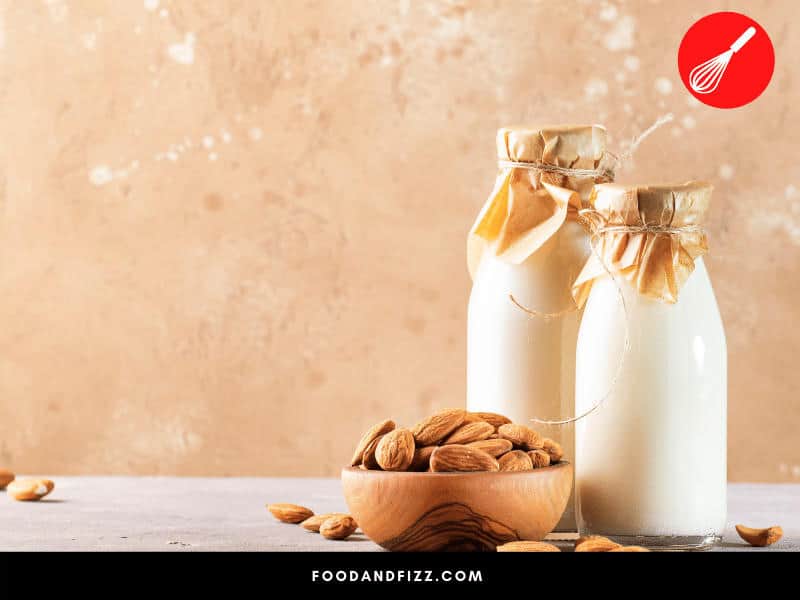
How to Pasteurize Almond Milk at Home
Everyone looks forward to cutting costs and time, and pasteurizing milk at home is an excellent way to achieve this. Pasteurizing almond milk at home is pretty straightforward and effective. All you need to do is follow these steps:
Have All the Ingredients
Raw almonds are an excellent choice when looking forward to creamy milk. Choosing roasted nuts can prove less useful, as they are dry, brittle, and with bitter undertones. At the same time, avoid peeling these almonds. Keeping the skin on will help improve the grittiness of your results in the long run. Above all, focus on high-quality almonds in this pursuit.
You’ll also need enough water during this period. The water you choose will affect the ultimate taste of your pasteurized almond milk. Avoid too much alkaline water as it could leave a pretty poor aftertaste.
An emulsifier is essential in this pursuit. Making the almond milk homogenized is critical because water and fat do not mix. Yet, you will be the one to determine whether or not there are any real benefits of filtering your almond milk.
Lastly, suppose you need flavored almond milk. It would be best to get your preferred flavored powders to add to the milk. A splash of strawberry or vanilla will ensure that the milk tastes better in the long run.
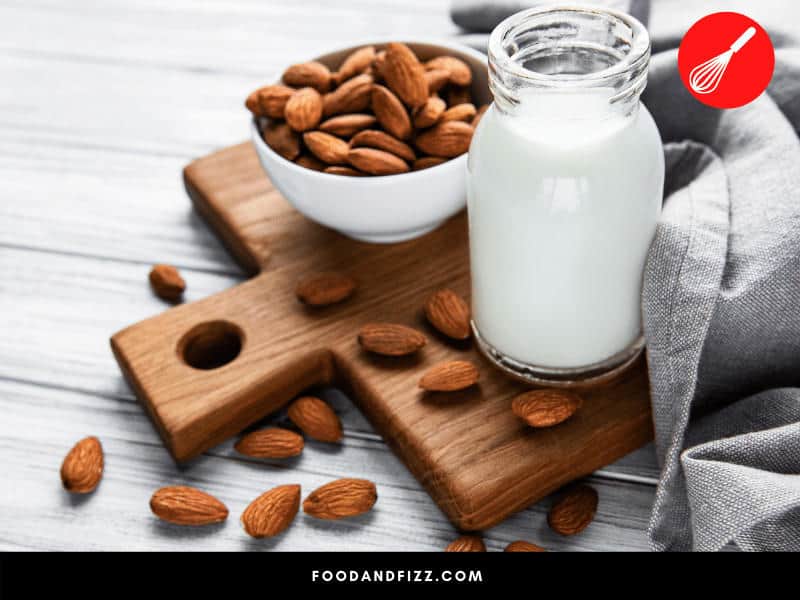
Soak and Blanch the Almond Milk
Ensure that you soak your almond nuts for approximately 12 hours before blending. This step enhances saturation, meaning you get a smooth and creamy texture in the long run. Since it leaves behind minimal pulp, this step encourages more liquid in your ultimate results. Blanch them immediately to avoid sourness once you remove the nuts from the water.
Blanch the Almonds
Blanching aims at eliminating pathogens and other microorganisms in the almond nuts. This step requires you to boil water in a saucepan and immerse the almonds for one minute. After this period, you will be free to remove the nuts, drain, and peel them. Next, transfer the blanched almonds to a bowl full of filtered water. Cover it and store it in the refrigerator.
Blend the Almonds
Now is the time to get your almond milk. Use a high-speed and high-powered blender to crush the nuts into milk. Add some water and blend until smooth.
Filter Your Almond Milk
An excellent filtration process ensures that you get a smooth and creamy result. Filtration removes any pulp from the almond milk, ensuring that you have a great drink in the long run.
Why You Need to Pasteurize Almond Milk
Pasteurizing almond milk is a critical step toward enjoying unrivaled health benefits in the long run. It offers multiple benefits, including the following.
Protection Against Pathogens
Pasteurization kills pathogens and microorganisms in almond milk. Killing these microorganisms will protect you against typhoid fever, tuberculosis, sore throat, and scarlet fever.
The milk will be exposed to over 150 degrees Fahrenheit temperatures, making it easier to destroy bacteria. However, sometimes, beneficial bacteria get killed in the process.
Longer Shelf Life
Pasteurizing milk kills various microbes that could make it vulnerable to destruction. Eliminating these bacteria ensures that your almond milk stays for a significantly longer time.
Quality
Suppose you are looking forward to enhancing the quality of your almond milk. In that case, it would be best to pasteurize it. This method eliminates volatile contaminants and improves stability. In addition, you are confident of standardized results in the long run.
Potential Improvement In Flavor
Pasteurization allows you to improve the flavor and scent of your almond milk. You can choose a flavor that suits you best and add it to the almond milk. This way, you can readily eliminate the unpleasant scents caused by bacteria.
Regulatory Compliance
Suppose you produce almond milk on a large scale. In that case, you must invest in excellent pasteurization and filtration methods. It is the only way to comply with the set regulations. The FDA requires you to pasteurize almond milk to protect your consumers against health issues.
How the Pasteurization Process Works
Pasteurization follows three critical steps: heat treatment, target temperatures, and time. Heat treatment involves the immersion of almond nuts in boiling water. This treatment allows you to pasteurize the milk inside or outside its packaging, depending on personal preferences.
High temperatures guarantee the elimination of most pathogens. However, it should not be too hot to alter the milk detrimentally. The temperature should be controlled to achieve the best results in the long run.
Lastly, proper timing ensures that your milk remains top-quality. Ensure that this period is not prolonged to avoid destruction.
Frequently Asked Questions About How to Pasteurize Almond Milk
Is Almold Milk Nutritious?
Almond milk is rich in minerals, proteins, and vitamins, including vitamins D and E, calcium, and phosphorous, which will keep you healthy.
When Should You Not Drink Almond Milk?
Almond milk is an excellent addition to your daily dietary menu. It offers multiple nutrients and health benefits to keep you fit and healthy. Yet, understanding how to pasteurize it will make the deal even sweeter. The insights above guide you accordingly.

